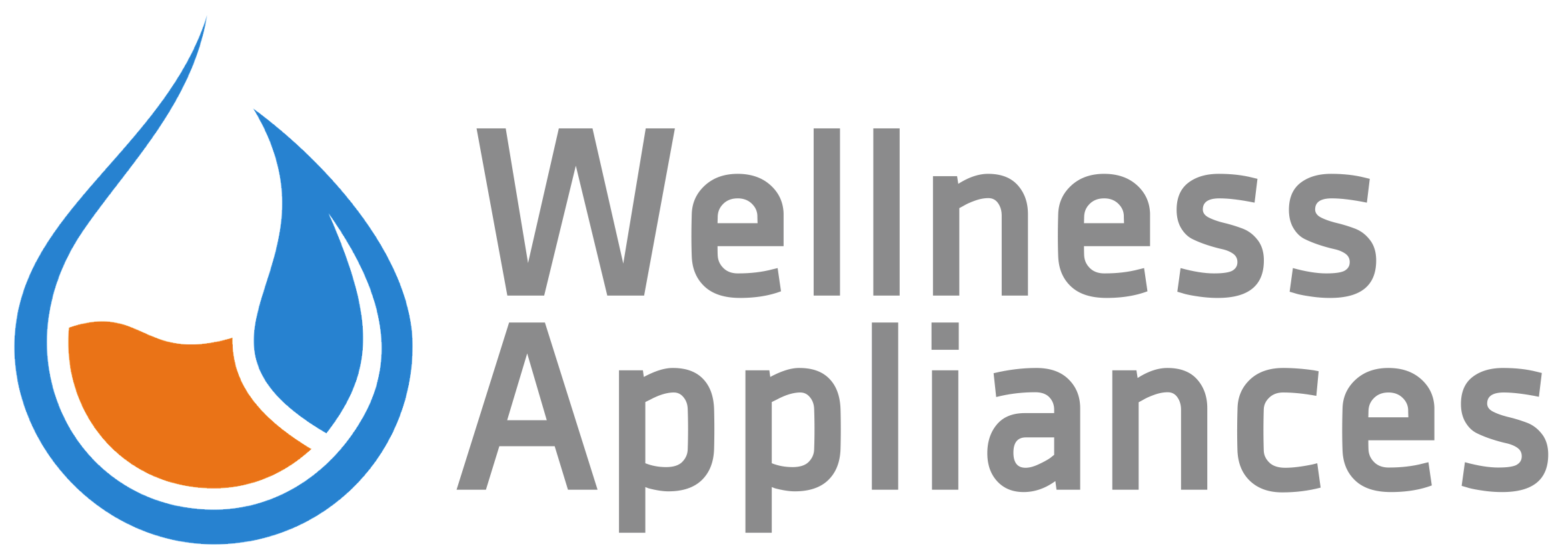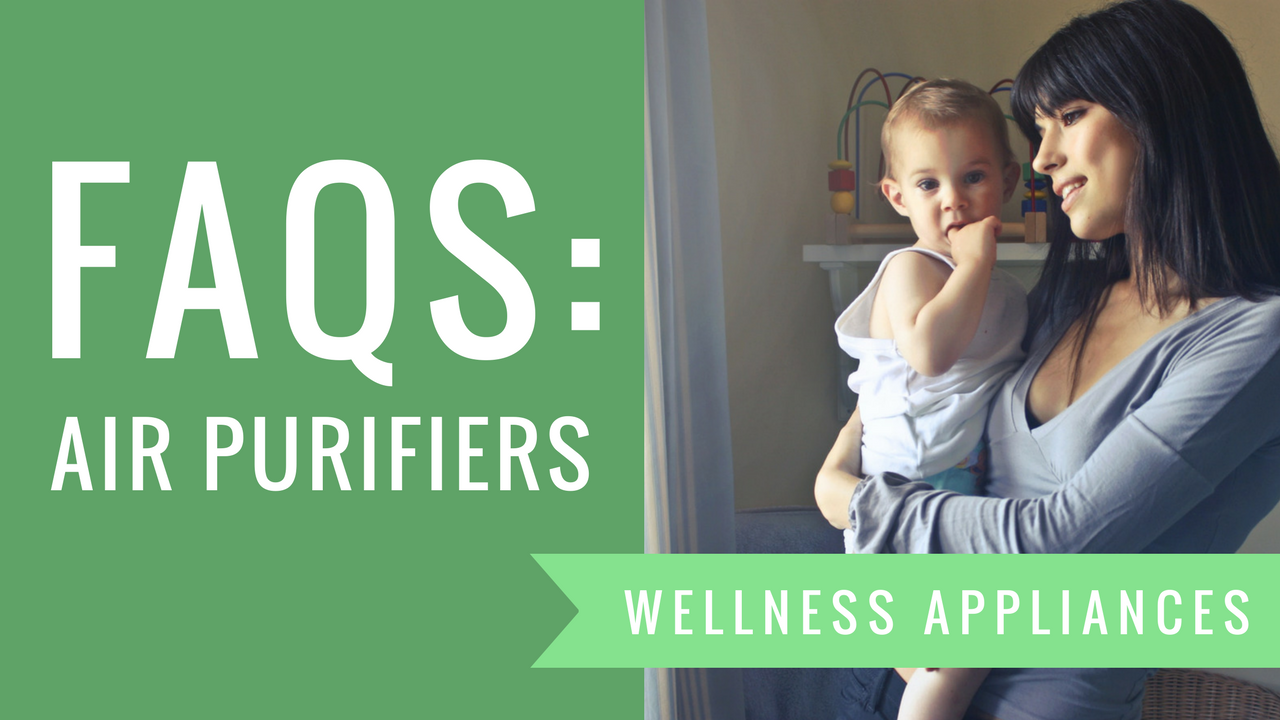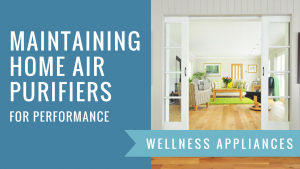Contents
- 1. What is an Air Purifier and how do they work?
- 2. When you need an air purifier
- 3. You will also save money
- 4. Poor air quality sources
- 5. Choosing an air purifier
- 6. How soon will an air purifier work and how do I know?
- 7. About HEPA filters
- 8. How HEPA filters work
- 9. When to change the filter
- 10. Those with asthma
- 11. Clean Air Delivery Rate
- 12. Cost to run an air purifier
- 13. Do air purifiers make noise?
- 14. How long to operate an air purifier?
- 15. Where to put the air purifier in my house?
- 16. Opening windows with the air purifier is okay
- 17. Whole-house air purifiers
- 18. Maintenance and cleaning an air purifier
- 19. What is an ionizer?
- 20. Decreased airflow
- 21. Why will the air cleaner not operate?
- 22. What room sizes can an air purifier clean?
Ninety percent of our time is spent inside. Inside the home, office, or other work environment. The US Environmental Protect Agency (EPA) states that the pollutants indoors are two to five times higher than outdoors. That is something to seriously think about. You can suffer from adverse health conditions from dust, pollen, mold spores, dust mites, pet hair/dander, and tobacco smoke that are not permitted in commercial buildings. At home, however, smoking is allowed, so pollutants will be substantial. An air purifier will remove pollutants and provide clean healthy air inside your home and other buildings.
READ MORE: Best Air Purifier Reviews and Buying Guide
1. What is an Air Purifier and how do they work?

Air purifiers are a small electric equipment device or appliance that gets rid of pollutants and air contamination in the home. This will greatly enhance indoor air quality. People suffering from asthma and allergies and any respiratory illnesses will see improvement immediately. Not only will the air feel better to breathe in, the air will be cleaner and you will not see as much dust on your furniture.
Air purifiers work by taking in the bad air putting it through filter layers that trap the impurities in the air. The air is cleaned by the filters and then put back into your home environment.
2. When you need an air purifier
You will want an air purifier for better air for your health to relieve poor health symptoms. The air purity is improved enormously as soon as you turn the device on. The impurity of indoor air is a priority as an environmental interest in this country today. You can help on the other end of the bad air conditions by always changing furnace/air conditioner filters. Furnaces with electrostatic filters do not need to be changed but do need to be looked at and cleaned occasionally. Electrostatic filters use static electricity and have a static charge that causes airborne particles to cling to the filter, just like static charged clothing or hair sticks together. Babies and youngsters to include the elderly are very vulnerable to poor air quality. Preventing illness and disease is necessary to do now for yourself and the people you love. Even pets benefit.
3. You will also save money
By not needing to visit the doctor from health issues, you will save a lot of money. Time is money—you will not need to clean as often. You will have the capacity to not worry about indoor air. Honestly access your situation and learn why this is the way to go for indoor air purification. If you do not do what is required now, when will you do it?
4. Poor air quality sources
Today’s contemporary homes are sealed well to hold air inside with no leaks and should be energy efficient. Older homes, on the other hand, are drafty and not energy efficient. However, this small amount of air leakage does nothing for air circulation within to remove pollutants. Newer homes and older homes do not breathe. They are tight. Therefore, the contaminants within the home circulate within the home. As mentioned above, these toxins and chemicals are in pollen, dust, mold, pet dander (lose scales on the skin), feathers from birds and pillows, allergic causing matter that are ingredients for poor air quality. Even tobacco smoke recirculates and some will catch in the furnace filter. In the winter, it is too cold to open doors in many places, and in the summer, it is too hot to not run the air conditioner in many places. For these problems, an air purifier is extremely beneficial.
5. Choosing an air purifier
There are many types, styles, and feature from which to choose. Air purifiers differ in how effective they are based upon many factors. What do you want to accomplish? Some units are better for removing odors and some are better at removing particles and chemicals. Therefore, if you want to remove pollutants and particles, choose the best technology and the correct model for the square footage of the room.
If you have mold or mildew with a musty odor in your basement, an air purifier will remove mold spores and the musky smell. An activated carbon air purifier is good for smokers in the house. There are air purifiers that will trap and remove pet dander from the air. For non-specific reasons for simply improving your indoor air quality, most air purifiers will work well. Additionally, there are air purifiers made for asthma suffers.
6. How soon will an air purifier work and how do I know?
You will feel the results within a few days. The air will feel thinner and your environment will be cleaner. The cobwebs will be gone too—and they trap dust! You know what webs do—they hold the dead bugs the spiders will eat. This is another allergen in your home for you to deal with. With an air purifier, you will sleep better and enjoy more relaxed breathing in and out. When you change the HEPA filter, you will see for yourself the amount of dirt and particles it has collected. To be amazed with an air purifier, you will no longer have the morning sneezing, nose blowing, and congestion that you have been having. The air purifier will clean your bad air sources. Additionally, the HEPA air purifiers are the best.
7. About HEPA filters
HEPA (High Efficiency Particulate Air) filters are very effective and efficient for removing microscopic elements for the air that passes through it. The United States Atomic Energy Commission developed this technology in the 1940s. It was used as a top-secret implementation to filter radioactive particulate contamination. HEPA is the standard and industry leader for the best type filter there is in the marketplace. They remove up to 99.97 percent of all particles greater than 0.03 microns (a millionth of a meter). A micron is 1/25,400th of an inch or about 100 times smaller than a human hair and the human eyes do not see those particles.
8. How HEPA filters work
They work by first using extremely impenetrable fiberglass. Normally a pre-filter that is washable locks in the larger particulates that are microscopic matter suspended in the home’s air. Much of this moves around when you walk about. The HEPA filters trap the pollen, dander, dust, and mold spores in the thick fibers of the filter. Another good thing about the HEPA filter is that it has a carbon filter within that confines odor, gases, and other household chemicals that can be allergens to sensitive people. Larger particles are captured with carbon filters helping to reduce foul odors. The contaminated air is now purified and returns to the house or room as clean air.
At the outside is the pre-filter usually at the unit’s door. In the front of the pre-filter is the carbon filter and the HEPA filter is in front of it and is the final filter the bad air passes through before putting clean air into your room.
9. When to change the filter
As a rule, you will need to change the pre-filters every 4 to 5 months. The HEPA filters will need to be changed every 2 to 4 years and that is dependent on factors inside your home such as pets, tobacco smoke, wood burning units, those with moderate to severe allergies, and some with slight allergies. Some air purifier brands have electronic statistics or others with timers indicating the length of time filters will last.
When you buy a HEPA-type air filter, determine the cost for the additional new filters. Carbon filters and HEPA filters last for different time spans. They will need to be purchased individually at various times.

10. Those with asthma
People with asthma will do best with HEPA air purifiers; however, it is advised that these people avoid ozone, a gas that occurs naturally in the Earth’s atmosphere and at ground level. Those suffering from asthma should not use ozone generators and air purifiers that produce ions. These units can emit by-products that are harmful to asthmatics containing ozone. An air purifier cannot cure allergies or asthma. There are no side effects with air purifiers of a high quality that do not generate ozone. Asthmatics must be extra cautious and consult with their healthcare professional.
11. Clean Air Delivery Rate
CADR is the amount of filtered air volume returned to the air after being filtered by the air purifier. Three measurements are specified for dust, tobacco smoke, and pollen. The beauty of this is that you will know that the greater the CADR number the higher the air purifier is filtering your inside air.
12. Cost to run an air purifier
Some people want the math details and some people do not care. You will need to check the cost of electricity in your area at your power company. You will want to factor in the cost of replacement filters. Most air purifiers today are cost-effective engineered and designed for saving energy, such as Energy Star® Certified units. To determine your annual electricity cost: Power in Watts (consumption) x rate of electricity ($/kWh) x hours of use.
13. Do air purifiers make noise?
Air purifiers generate sound to be the equivalent of an electric fan. They usually have several speeds and the lower the speed the quieter they are. They sound similar to a central air conditioner and are simply white noise in the background where you can watch TV and listen to music and have conversations. You become used to it the same as with a furnace running and can sleep through the night. There are whisper-quiet air purifiers available in the marketplace.
Typically, air purifiers are turned to high to quickly clean then turn down to low or medium for maintaining the clean air level in your home.
14. How long to operate an air purifier?
You should run them continually for best results for your home’s air purity. When you turn the purifier off, your home environment will go back to the state it was in before using the air purifier. You will always be trapping pollutants; ideally, it should run constantly for optimal benefits.
15. Where to put the air purifier in my house?
A portable air purifier should be put in the room where you spend lots of time. That might be the bedroom at night and the living room or kitchen during the day. You might want a second unit to be close to an inside house pet for its dander removal. Always put it in the center of the floor if not a walking hazard or at least 2 feet from walls, doors, and furniture for airflow. Never put an air purifier in the corner of a room.
Additionally, if you use an extension cord, it must be an appliance cord with the wire gauge the same as the cord on the unit. If it is 3-prong grounded, the extension cord must be the same for the male and female ends. Do not use adapters that you can purchase from the hardware store to have the round ground prong fit into the wall receptacle. It is not grounded and you could start a fire.
16. Opening windows with the air purifier is okay
Open the windows and doors for fresh air while the air purifier is operating. It will be a good mix.
17. Whole-house air purifiers
 Portable units will not clean your entire house unless you have one in each room running all the time. Whole-house systems are more expensive and retrofit to your existing furnace system. They are wonderful! If your budget does not permit this, consider the rooms you are in most of the time and purchase a few or even one high-end unit to work for you.
Portable units will not clean your entire house unless you have one in each room running all the time. Whole-house systems are more expensive and retrofit to your existing furnace system. They are wonderful! If your budget does not permit this, consider the rooms you are in most of the time and purchase a few or even one high-end unit to work for you.
18. Maintenance and cleaning an air purifier
Turn the unit off and unplug it every time before cleaning it to avoid potential electrical shocks. Use dish detergent and warm water with a soft cotton cloth to wipe it down. You can use glass cleaners or alcohol as well. Be sure to rinse and towel dry with a cloth towel not a paper towel where it can catch in tight spots. Wipe the grill area the same and stay away from abrasive cleaners that can scratch.
19. What is an ionizer?
Negative ions are released from some air purifiers with an individually controlled ionizer on the unit when turned on releasing the clean filtered air into the room. Ions are minuscule particles that have a negative or positive charge. Ions are around us in nature. Rain produces negative ions as do waterfalls, the ground, and air. They provide peaceful feelings. Neither positive nor negative ions are harmful and you cannot see them. They have no color or odor. Ozone, on the other hand, has an odor when it rains. The air purification procedure is enhanced when negative ions attach to small floating particulates in your home.
The particles assume a negative charge and can connect with particles holding a positive charge for example pollen, pet dander, dust, tobacco, and fireplace smoke that will be trapped by the filtering system in the air purifier. When the filter is at its end of life, it is less able to capture the charged particles. Dust might accumulate around the grills on the front. This is because the ionization affect created by negative ions going out from the air outlet indicates the effectiveness of negative ions. Remove the dust with a damp cloth. Ionizers can sometimes produce a harmless cracking or popping sound.
An ionizer used with dirty filters can result in dirty particles in the clean air leaving the unit that will now be dirty. These will attach to carpets, walls, furniture, and other items within the home. Dirty particles can be hard to remove and homes with extreme pet dander, smoke, and dust can decrease the life span of the HEPA filters. Check the filters more often and use the ionizer less often if this seems to be an issue.
20. Decreased airflow
Be sure the air inlet is not blocked by anything. If it is not blocked, the HEPA or carbon filters need to be cleaned or changed with new ones. Check your filters often and replace the filters when they are filthy dirty.
21. Why will the air cleaner not operate?
Be sure the unit is plugged into the wall outlet and check your circuit breaker. Check that the operating speed button works. Be sure the door is shut tightly because the unit will not function if it is not shut securely. Be sure the filters are installed right and the door is shut firmly.
22. What room sizes can an air purifier clean?
Room size can vary from 6- x 9-feet (54-square feet) to 20 x 24-feet (480-square feet) and possibly more. Check the AHAM (Association of Home Appliance Manufacturers) for their seal on the unit and area of coverage. AHAM verifies the volume and energy used to certify air purifiers to their standards.




